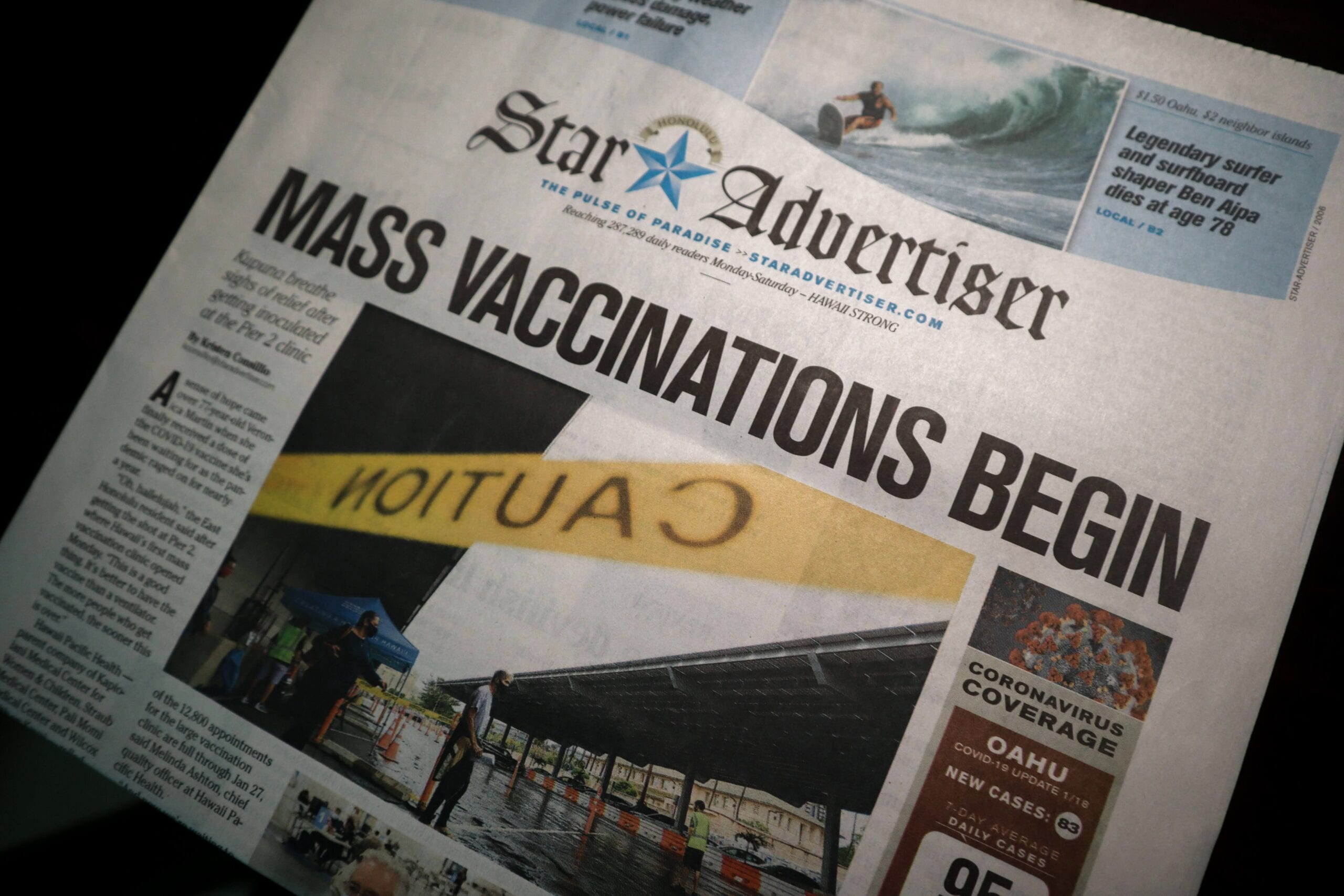In December, the Food and Drug Administration (FDA) granted Emergency Use Authorization (EUA) for two COVID-19 vaccines. A EUA means the FDA has determined the vaccines are safe and effective enough to recommend for preventing COVID-19. No COVID-19 vaccine has received full FDA approval as past vaccines have, which takes more time. The pharmaceutical companies Pfizer and BioNTech developed one, and the company Moderna developed the other. While both vaccines are mRNA vaccines that require two doses, they have some differences as well.
A third vaccine, developed by Johnson & Johnson/Janssen, received EUA in February 2021. However, the J&J vaccine is not an mRNA vaccine.
Below is more on how the Moderna and Pfizer vaccines work, how they are similar, and how they differ.
Pfizer-BioNTech
Status:
Emergency use in the U.S. and other countries
Recommended for:
Anyone 16 and older. Adolescents between 12-15 do not have authorization to receive the vaccine. But Pfizer and BioNTech are planning to submit data to the FDA for an amendment. This is to their EUA for the vaccine after a news release from the companies states that a Phase 3 study shows it prevents symptomatic disease in this age group. The release did not include details data from the trial, which hasn’t peer-review or publish in a scientific journal. If FDA approves it, adolescents could get the vaccine before school starts. The company is now testing in children as young as 6 months.
Dosage: Two shots, 21 days apart
Common side effects:
Chills, headache, pain, tiredness, and/or redness and swelling at the injection site, all of which generally resolve within a day or two of rest, hydration, and medications like acetaminophen. (If symptoms don’t resolve within 72 hours or if you have respiratory symptoms, such as cough or shortness of breath, call your doctor.) On rare occasions (as in, 11 cases in 18 million vaccinations), mRNA vaccines have appeared to trigger anaphylaxis, a severe reaction that is treatable with epinephrine (the drug in Epipens®). For that reason, the Centers for Disease Control and Prevention (CDC) requires vaccination sites to monitor everyone for 15 minutes after their COVID-19 shot, and for 30 minutes if they have a history of severe allergies or are taking a blood thinner.
How it works?
This is a messenger RNA (mRNA) vaccine, which uses relatively new technology. Unlike vaccines that put a weakened or inactivated disease germ into the body, the Pfizer-BioNTech mRNA vaccine delivers a tiny piece of genetic code from the SARS CoV-2 virus to host cells in the body, essentially giving those cells instructions, or blueprints, for making copies of spike proteins (the spikes you see sticking out of the coronavirus in pictures online and on TV). The spikes do the work of penetrating and infecting host cells. These proteins stimulate an immune response, producing antibodies and developing memory cells that will recognize and respond if the body is infected with the actual virus.
How well it works?
95% efficacy in preventing COVID-19 in those without prior infection. The researchers report that the vaccine was equally effective across a variety of different types of people and variables, including age, gender, race, ethnicity, and body mass index (BMI)—or presence of other medical conditions. In clinical trials, the vaccine was 100% effective at preventing severe disease. In late March, a small CDC study that enrolled 3,950 health care personnel, first responders, and other essential and frontline workers showed the vaccine to be 90% effective upon full immunization (at least 14 days after the second dose) in real-world conditions.
Moderna COVID-19 Vaccine.
Status:
Emergency use in the U.S. and other countries
Recommended for:
Adults 18 and older. Moderna is still testing the vaccine in children ages 12-17, and children aged 6 months to 12 years.
Dosage:
Two shots, 28 days apart
Common side effects:
Similar to the Pfizer vaccine, the Moderna vaccine’s side effects can include chills, headache, pain, tiredness, and/or redness and swelling at the injection site. All of which generally resolve within a day or two. On rare occasions, mRNA vaccines have appeared to trigger anaphylaxis. It is a severe reaction that is treatable with epinephrine (the drug in Epipens®). For that reason, the CDC requires vaccination sites to monitor everyone for 15 minutes after their COVID-19 shot. Then for 30 minutes if they have a history of severe allergies.
How it works?
Similar to the Pfizer vaccine, this is an mRNA vaccine that sends the body’s cells instructions. It is for making a spike protein that will train the immune system to recognize it. The immune system will then attack the spike protein the next time it sees one (attached to a real SARS CoV-2 virus).
How well it works?
94.1% effective at preventing symptomatic infection in people with no evidence of previous COVID-19 infection. The vaccine appears to have high efficacy in clinical trials. This is among people of diverse age, sex, race, and ethnicity categories and among persons with underlying medical conditions. (although as mentioned above, the efficacy rate drops to 86.4% for people ages 65 and older). In late March, a small CDC study that enrolls 3,950 health care personnel, first responders, and other essential and frontline workers show the vaccine to be 90% effective. This is upon full immunization (at least 14 days after the second dose) in real-world conditions.
Differences Between Pfizer and Moderna Vaccines.
The Pfizer vaccine can be administered to anyone age 16 and older while only adults age 18 and older can receive the Moderna vaccine. Both companies are currently testing the vaccine in youth aged 12 and older.
Both vaccines require two doses, but the time between doses is different. People receive the second dose of the Pfizer vaccine is at least 21 days after the first dose. The time between Moderna doses is at least 28 days.
Both vaccines require specialized cold storage, but the Pfizer vaccine has much colder temperature requirements. The Pfizer vaccine requires -94º F (-75º C) for shipping and storage, much colder than typical freezers at doctors’ offices and pharmacies. After it thaws, the Pfizer vaccine remains good for 5 days in a normal refrigerator.
The Moderna vaccine requires -4º F (-20º C) for shipping and storage, similar to a typical home freezer. Once opened, the Moderna vaccine remains good at refrigerator temperature for 30 days and at room temperature for 12 hours.


